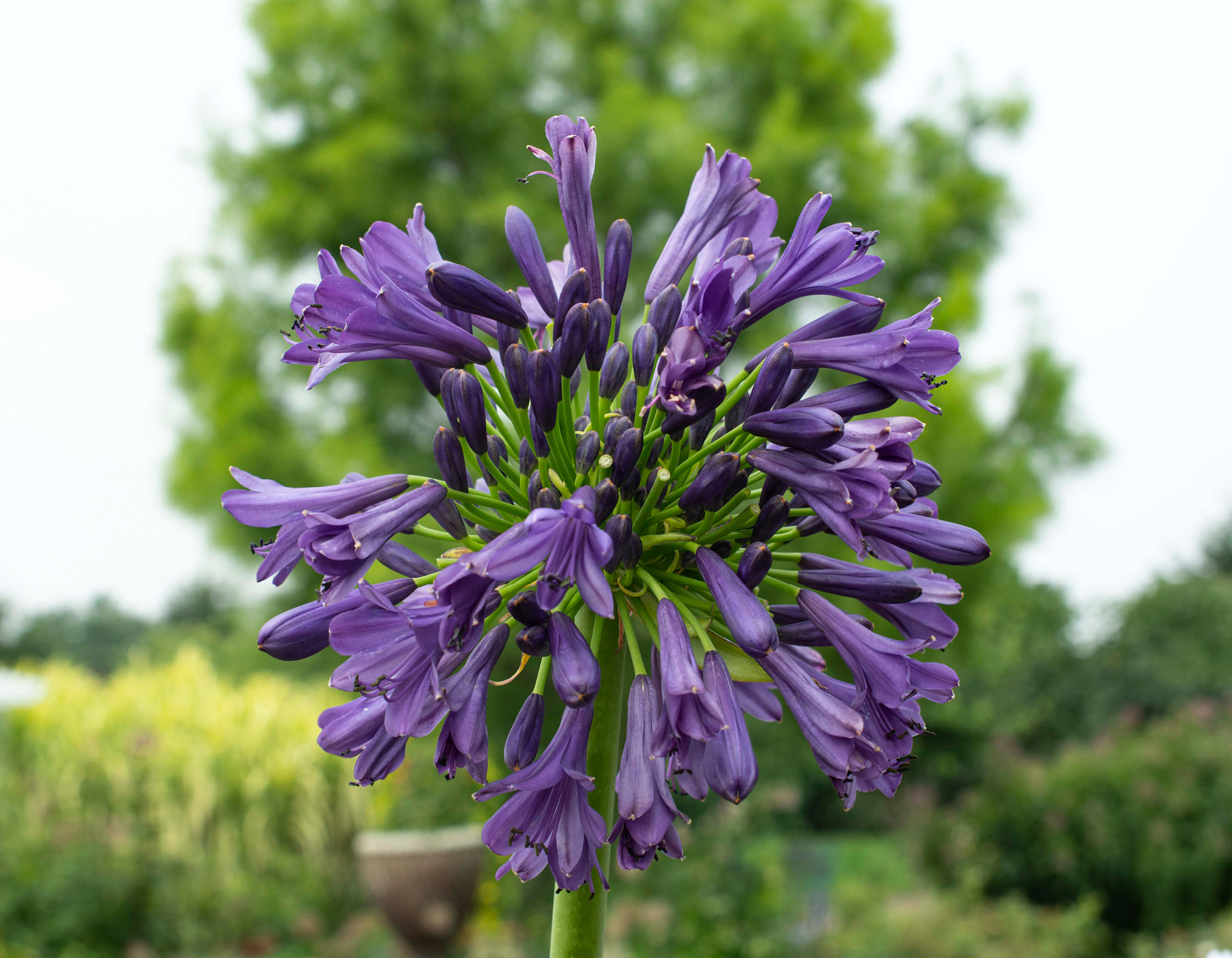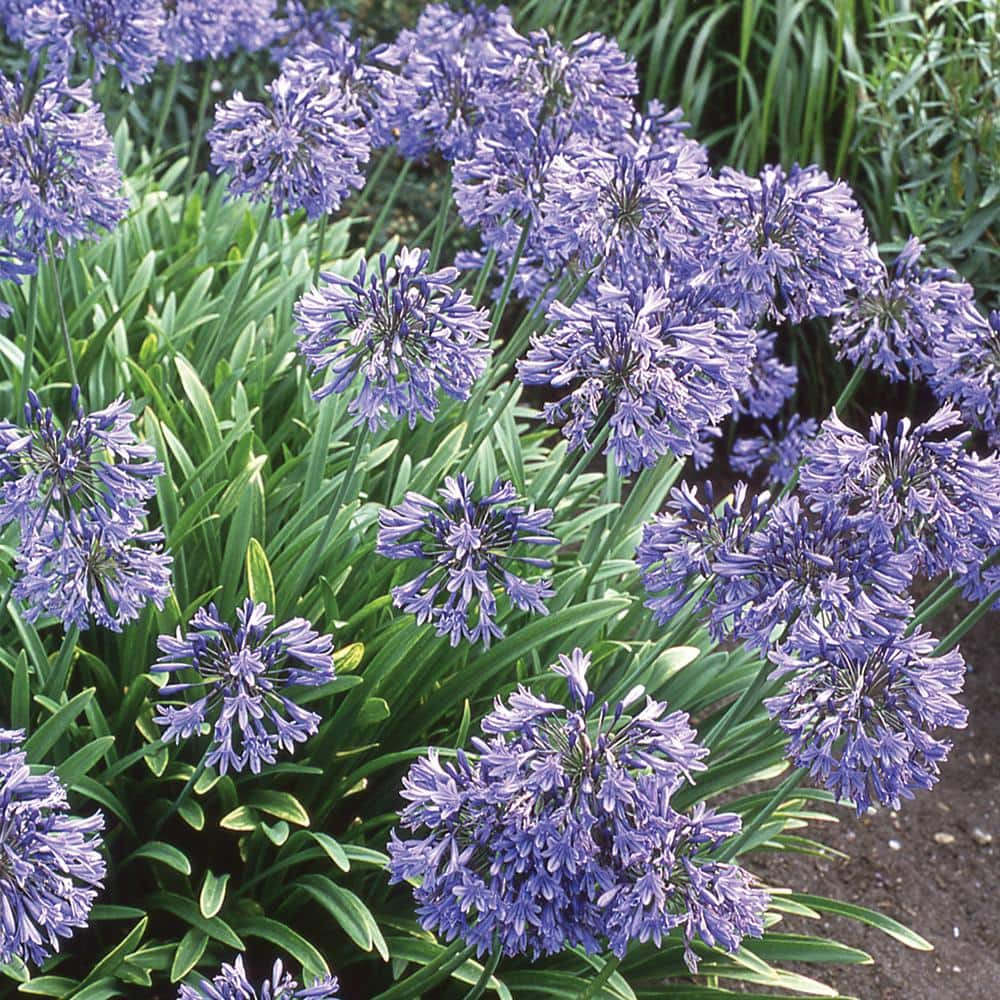Expanding Agapanthus: A Complete Overview to Beautiful Blooms
Wiki Article
Letting Loose the Secret to Effective Agapanthus Cultivation: Advice for a Flourishing Garden
In the realm of gardening, cultivating agapanthus successfully needs a calculated technique that includes different aspects of plant treatment. With cautious interest to detail, one can unlock the keys to nurturing these stunning blooms, leading to a garden that flourishes with beauty and vibrancy. By comprehending the nuances of agapanthus cultivation, one can create an environment where these plants thrive and grow perfectly. In the adhering to discussion, we will explore essential tips and techniques that will certainly direct you towards a prospering agapanthus garden, providing insights right into finest methods, soil conditions, watering strategies, and a lot more.Planting Agapanthus: Ideal Practices
When planting Agapanthus, appropriate soil preparation is vital for ensuring effective development and development of these beautiful blossoms. Agapanthus, commonly referred to as Lily of the Nile or African lily, flourishes in well-draining dirt with a slightly acidic to neutral pH level - Agapanthus. Prior to planting, it is critical to change hefty clay soils with raw material such as garden compost or peat moss to improve drainage and offer necessary nutrients for the plantsTo plant Agapanthus, choose a location that obtains full sunshine to partial shade, as this will advertise healthy and balanced growth and bountiful flowering. Dig an opening twice the size of the plant's origin round and position the Agapanthus at the same deepness it was formerly growing. Carefully backfill the opening with dirt, pressing down securely to get rid of any air pockets around the roots.
Water the freshly planted Agapanthus completely and remain to maintain the soil uniformly wet, especially during the plant's energetic expanding period. Agapanthus. Applying a balanced fertilizer once a month can even more sustain the plant's development and blooming. By following these finest techniques for growing Agapanthus, you can develop a spectacular screen of these exciting flowers in your garden
Ideal Soil Conditions for Agapanthus
For ideal growth and blooming success of Agapanthus plants, guaranteeing the soil problems are ideal is crucial. Agapanthus prefers dirt that is abundant in nutrients, so integrating a balanced fertilizer throughout the expanding season can promote healthy and balanced development and dynamic blooms.
Watering and Fertilizing Tips
To make sure healthy growth and vibrant blossoms, correct watering and fertilizing strategies are crucial for effective Agapanthus growing. Agapanthus plants take advantage of routine watering, specifically during the growing season. It is suggested to water deeply when a week, guaranteeing the soil is wet however not soaked. During hot weather or in pots, more frequent watering might be essential to stop the dirt from drying entirely.When it pertains to fertilizing Agapanthus, a balanced fertilizer with equal parts nitrogen, phosphorus, and potassium can be used in the springtime to promote healthy development and blooming. Slow-release fertilizers are optimal for offering nutrients progressively over a prolonged period. Prevent over-fertilizing, as this can lead to excessive foliage growth at the expenditure of flowers.
Furthermore, incorporating natural matter like garden compost right her latest blog into the soil can boost nutrient degrees and enhance dirt framework, assisting in the general health of the Agapanthus plants. By complying with these watering and feeding suggestions, garden enthusiasts can ensure their Agapanthus plants flourish and generate magnificent screens of blossoms.
Trimming and Deadheading Techniques
Appropriate pruning and deadheading strategies play a vital duty in preserving the wellness and visual appeals of Agapanthus plants, enhancing the vital techniques of watering and fertilizing for effective cultivation. Pruning Agapanthus entails eliminating invested flower heads, dead or yellowing fallen leaves, and overall shaping of the plant to advertise better growth. Deadheading, the procedure of removing faded blossoms, not just enhances the plant's look yet additionally encourages additional growing.When deadheading Agapanthus, it is advisable to trim off the flower stem at the base utilizing sharp, tidy shears. This procedure redirects the plant's energy from seed manufacturing back right into origin and foliage growth, promoting a much healthier and more robust plant. Routine deadheading can expand the growing period of Agapanthus and protect against self-seeding, which can cause congestion.
In terms of pruning, Agapanthus typically benefits from a light trim after flowering to clean the plant and motivate fresh growth. Cutting down the spent flower stems and removing any dead or damaged foliage helps keep the plant's vitality and total appearance. However, it is vital to avoid cutting right into the crown of the plant, as this can damage its wellness.

Protecting Agapanthus From Pests and Diseases
Implementing reliable parasite and illness management strategies is critical to guarding the health and wellness and vitality of Agapanthus plants in farming. Agapanthus are normally hardy plants, yet they can still come down with numerous bugs and diseases otherwise appropriately cared for. One usual insect that affects Agapanthus is the Agapanthus borer, a caterpillar that passages into the plant, creating damage to the fallen leaves and flowers. To prevent invasions, regular examination of the plants is vital. If borers are spotted, they can be by hand removed, or insecticidal soap can be made use of as a control step.In enhancement to pests, Agapanthus are prone to conditions such as root rot and fungal leaf places. These issues can typically be protected against by making sure correct drainage and preventing overwatering. Impacted parts of the plant must be promptly removed to avoid additional spread if indications of condition show up. Fungicides might also be utilized as a treatment procedure, adhering to the supplier's guidelines thoroughly. By remaining alert my link and attending to bug and condition concerns without delay, garden enthusiasts can aid their Agapanthus flourish and thrive.

Verdict
In final thought, effective cultivation of agapanthus needs correct planting methods, perfect dirt conditions, sufficient watering and feeding, regular pruning and deadheading, and defense from conditions and pests. By complying with these ideas and tricks, garden enthusiasts can guarantee a growing yard Continued filled with stunning agapanthus blossoms. Agapanthus. Remember to maintain constant treatment and focus to information to promote the health and durability of these magnificent plantsWhen planting Agapanthus, proper soil preparation is necessary for guaranteeing successful development and growth of these beautiful flowers.Water the newly planted Agapanthus completely and continue to keep the soil evenly damp, particularly during the plant's active growing season.For optimal growth and blooming success of Agapanthus plants, guaranteeing the soil conditions are perfect is important. When hair transplanting or planting Agapanthus, guarantee the soil is well-prepared to provide the necessary foundation for the plants to develop themselves effectively. One common pest that impacts Agapanthus is the Agapanthus borer, a caterpillar that tunnels right into the plant, triggering damages to the leaves and flowers.
Report this wiki page